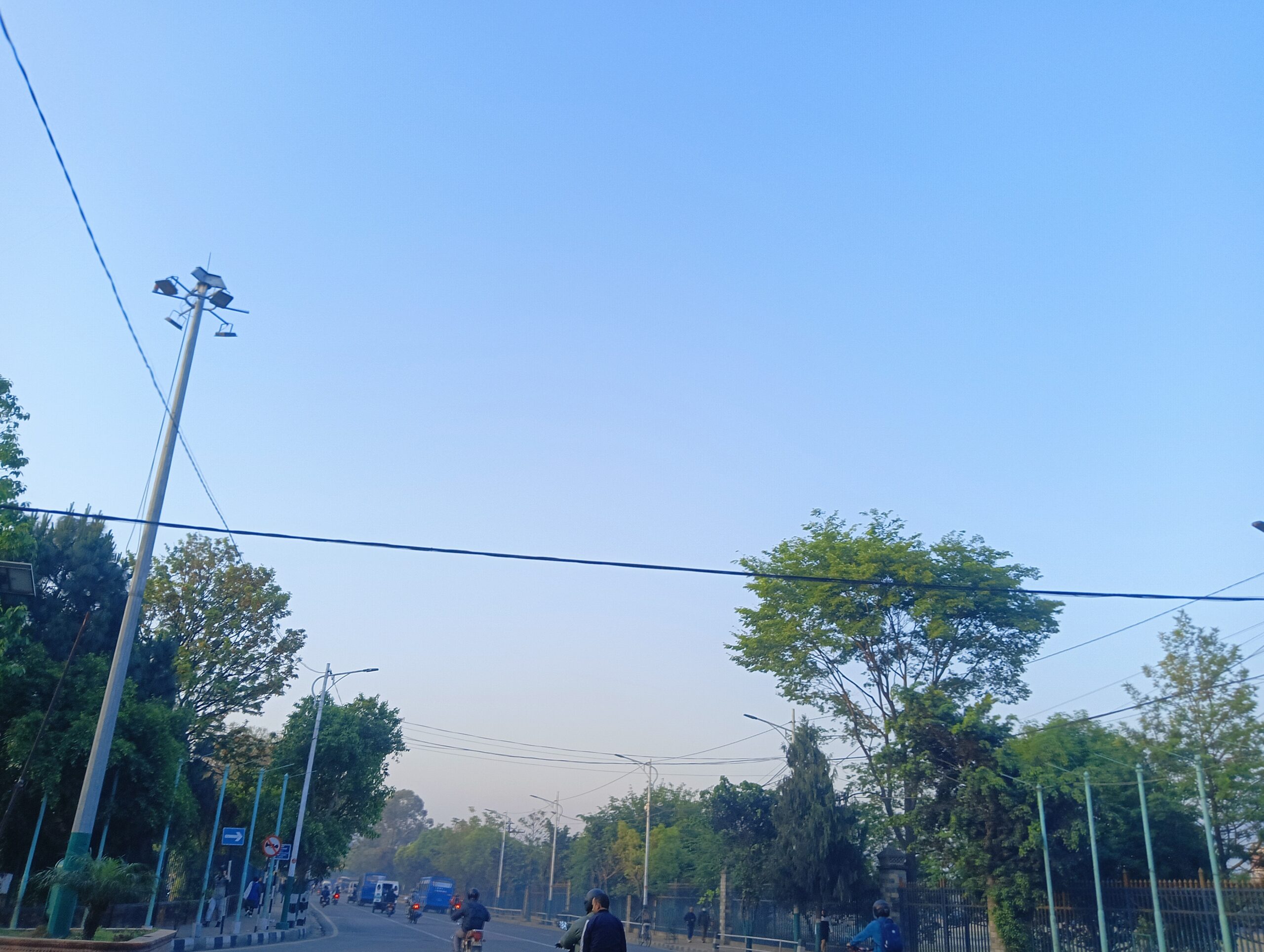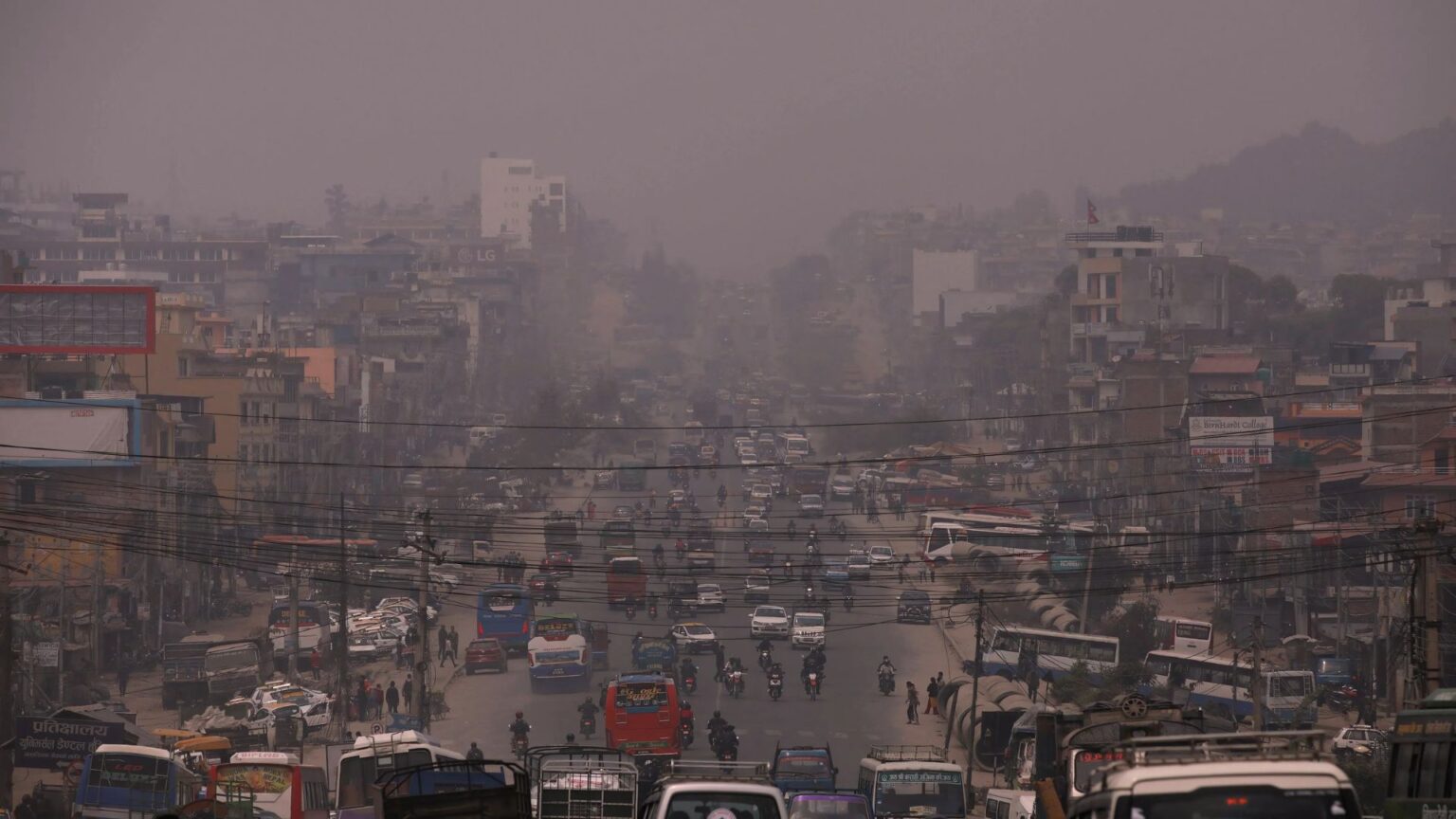Kathmandu Breathes Again As the Air Quality Improves—But for How Long?

After being surrounded by a thick layer of pollution, Kathmandu’s sky finally opened up—not just with much-needed rain, but with the sighs of a city that had been gasping for breath. After being ranked among the most polluted places in the world just some days earlier, with thick smog blurring the horizon and stinging the lungs of its residents, a few bouts of spring rain brought visible, almost surreal clarity to the capital’s skyline. But the real question now hangs in the air: was this relief just temporary?
Any Air Quality Index (AQI) reading between zero to fifty is considered good, meaning the air is clean and safe for everyone. When the index rises to around one hundred, it is still acceptable for the general public, though it may pose minor risks for particularly sensitive individuals. The real concern begins when the index crosses into triple digits—especially above 150 where air is classified as unhealthy for sensitive groups such as children, the elderly, or those with respiratory issues. Readings between 200 and 300 signal very unhealthy conditions, and anything beyond 300 enters the hazardous zone, where even healthy individuals may experience serious health effects
At the height of the pollution wave, Kathmandu’s AQI climbed past 300, putting it squarely in the “hazardous” zone. Masks, long a symbol of the COVID-19 pandemic, returned to faces for a different reason. Parents hesitated to send their children outside. Morning walks were abandoned. The air carried not the scent of fresh blossoms but a heavy, acrid burden.

Kathmandu before rainfall
According to the environmental experts, the winter months had been abnormally dry, leading to increased dust levels. Vehicular emissions—especially from the old diesel-run microbuses and two-stroke motorcycles that still make up a significant part of the valley’s traffic choked the streets. Open burning of waste, construction dust, and emissions from brick kilns only added to the toxic mix. And Kathmandu’s geography did the rest. Nestled in a bowl-shaped valley, the city’s surrounding hills trap pollutants, making it nearly impossible for winds to disperse them.
Another alarming contributor to this spike in pollution was the surge in forest fires across Nepal. With over 200 incidents reported nationwide during March and early April alone, vast areas of forested land were left smoldering, releasing clouds of smoke and fine particulate matter into the atmosphere. The haze from these fires drifted across districts and settled in the Kathmandu Valley, compounding the already deteriorating air quality.
Here, too, the rain played the role of an unlikely savior. In addition to clearing the urban air, the downpours helped douse several of the active wildfires raging across the country. While not a long-term solution, this natural intervention brought a much-needed pause to the environmental havoc, reducing both localized emissions and the broader spread of haze.
Still, the rains, while offering temporary relief, function more like a band-aid than a cure. They wash particulate matter out of the atmosphere temporarily, giving the illusion of improvement. But when the skies dry up again—as they inevitably will until the monsoon those same pollution sources will continue to pump contaminants back into the air.
What’s more alarming is that this is no longer just a seasonal nuisance. Air pollution is now one of Nepal’s most pressing public health crises. According to the World Health Organization, nearly one in nine deaths globally are attributable to air pollution—and Nepal’s rates are among the highest in South Asia. Respiratory issues, heart disease, and even mental health problems have been linked to long-term exposure to poor air quality. Children, the elderly, and those with pre-existing health conditions bear the brunt.
Change in Nepal rarely comes easy. Infrastructure remains a bottleneck. The electric bus fleet, for instance, is still far from meeting demand. Policy enforcement is also patchy at best—especially when industries or political interest groups are involved.
Beyond infrastructure, perhaps the bigger challenge lies in public attitude. While urban Nepalese are increasingly aware of environmental issues, daily survival often overshadows the long-term need for sustainable living. Open burning continues in many areas, and public transport remains overrun and inefficient, discouraging its use even among those who might otherwise leave their cars at home.
As of this week, Kathmandu’s AQI has dropped to around 100—a figure that still isn’t safe for sensitive groups, but one that feels like a blessing compared to last month’s toxic levels and let’s not forget: this breath is borrowed. Unless we rethink the way we live, move, and build our cities, Kathmandu’s skies will darken again—and next time, we may not be so lucky with the rain.
